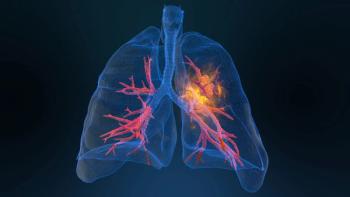
Outpatient Robotic Partial Nephrectomy Is Safe/Feasible for Renal Tumors
A prospective trial established that 97% of patients were successfully discharged on the same day as receiving robotic partial nephrectomy.
The majority of patients who received robotic partial nephrectomy (RPN) were discharged the same day, according to results from a prospective real-world study presented at the
Efficacy findings from the trial revealed that in 275 patients treated with RPN, 267 (97%) were successfully discharged home the same day. Furthermore, the same day discharge (SDD) rate increased over subsequent years, with 100% of patients treated with RPN discharged the same day by year 3 following an SDD rate of 88% and 95% in years 1 and 2, respectively.
Additional data revealed that the mean recovery time prior to home discharge following the procedure was 2.0 hours in patients treated at the hospital and 1.4 hours in patients treated at an ambulatory surgery center (ASC). Furthermore, the 30-day readmission rate was 1.8%, with 5 readmissions occurring; a single readmission occurred within 24 hours that would have been avoided by uniform overnight admission. Moreover, no Clavien III to V complications, including urine leaks, postoperative hemorrhage, or transfusions, occurred.
“Truly outpatient RPN with same-day discharge from the recovery room as a routine is safe and feasible when outcomes are reliable and surgeon experience provides a predictably low risk of readmissions or major complications,” lead investigator Ronney Abaza, MD, FACS, a robotic urologic surgeon and medical director of Robotic Surgery at Central Ohio Urology Group, wrote in the presentation with study coauthors.1 “Readmission rates were comparable or better than published series using routine overnight or longer stays. Experienced surgeons with low early complication rates and readmissions should consider offering outpatient [RPN].”
The prospective database assessed on study encompassed 275 patients who underwent RPN across 3 hospitals and an ASC starting in March 2020. Additionally, SDD was planned in all patients regardless of patient or tumor characteristics, or time of day. The study outcomes included length of stay, complications, and readmission rates.
In 275 patients who underwent RPN, the mean age was 60 years (range, 28-85), the mean BMI was 32 kg/m2 (range, 18-59), and the mean American Society of Anesthesiology (ASA) score was 2.6 (range, 1-4). Furthermore, the mean tumor size was 3.6 cm (range, 1-11) and the mean RENAL score was 7.3 (range, 4-11).
A total of 18% of patients had Hilar tumors, 45% were treated with a retroperitoneal approach, 0% of patients underwent transfusions, and 100% had negative surgical margins. The mean operative time was 117 mins (range, 45-229), the estimated blood loss was 69 cc (range, 20-1000), and the mean warm ischemia time was 11.6 minutes (range, 0.-25.2). Most RPNs (n = 269) were performed with a multiport robot, no drains were used, and all RPNs performed in an ASC resulted in SDD.
Previously reported data published in Urology in 2013 revealed a similar trend among unselected patients who underwent RPN. Therein, data revealed that among 150 patients who underwent RPN, 97% of them were discharged on postoperative day 1, with a 30-day readmission rate of 2.7%.2 Additionally, results revealed that among patients ambulated on the day of operation, the mean length of stay was 1.1 days.
The study noted a transition from unselective to selective outpatient RPN in 2018 followed by a switch to uniform treatment on a planned outpatient basis in all patients since 2020. Investigators assessed how uniform RPN on a planned outpatient basis impacted SDD outcomes.
References
- Abaza R, Salka B, Carey B, Martinez O. New paradigm in robotic partial nephrectomy: planned outpatient surgery in all patients. Presented at the American Urological Association (AUA) 2025 Annual Meeting; April 26-29, 2025; Las Vegas, NV. Abstract IP07-27.
- Abaza R, Shah K. A single overnight stay is possible for most patients undergoing robotic partial nephrectomy. Urology. 2013;81(2):301-307. doi:10.1016/j.urology.2012.08.067
Newsletter
Stay up to date on recent advances in the multidisciplinary approach to cancer.

















































































